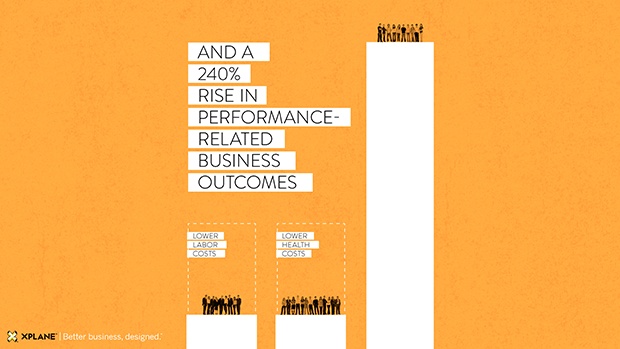In our last post, we explored how to adapt to the Business 3.0 era with Success Skill #2: “Execution and Process: Innovate and Respond.” Here we examine Success Skill #3 in detail. The Series supports the release of our video, “Did You Know? 6.0: Change to Thrive.”

Success Skill #3: Open Culture, Engaged Employees
Culture drives the bottom line.
A positive culture is at the heart of healthy organizations. In a 2013 Booz & Company global study, 86% of C-level executives and 84% of all managers and employees said workplace culture is key to their organization’s success. 6 in 10 saw culture as a more important ingredient than either strategy or operating models.
Cultural health drives financial success. According to the 2013 Gallup Report, “State of the American Workplace,” 70% of employees are not engaged or are actively disengaged. Gallup estimates that this costs the U.S. $450-$550 billion each year in lost productivity! The study further found that organizations with an average of 9.3 engaged employees for every actively disengaged employee experience 147% higher earnings per share versus their competition.
Engaged = better performance.
Employees who are engaged, and enjoy a culture with good working relationships, perform more effectively. They:
- Incur six fewer sick days per year
- Cut labor turnover costs in the US by $2.3 billion
- Yield a 300% increase in business innovation
Culture doesn’t just happen. It’s intentionally created. A recent study by the Human Capital Institute (HCI) found three interdependent components necessary for effective engagement. This “trifecta of engagement” represents the shared responsibility among the organization, the manager, and the individual employee:
- Senior organization leaders set the vision and tone, and their actions represent the entity as a whole
- Managers lead by example, and are a primary influence on the day-to-day work environment
- Employees must be open to engagement efforts by the organization, and must be willing to emotionally invest themselves in their work
Further, HCI’s research indicated that these critical workplace characteristics drive employee engagement:
- Challenging and exciting work
- An environment of mutual respect
- Openness to new ideas and collaborative processes
- Clear communication about how every organizational role contributes to its success
Zappos: steps ahead in change.
Zappos is consistently known as one the best places to work in America, has over $1 billion in revenue, and possesses a world-renowned workplace culture. Zappos utilizes a culture book, an open environment for questions, a life coach, and offers employees payment to leave the company if they wish to pursue opportunity they can’t find at Zappos. The firm encourages managers to socialize with teams outside the office, building communication and trust. The company’s founder says the operation depends on it:
“Our number one priority is company culture. Our whole belief is that if you get the culture right, most of the other stuff like delivering great customer service or building a long-term enduring brand will just happen naturally on its own.”
Tony Hsieh, CEO of Zappos
RadioShack & Zynga: patterns of mis-steps.
As with strategy and execution, getting to a vibrant culture isn’t easy. There are plenty of examples where poor company culture has hindered corporate success. For example:
- RadioShack, a once-revered brand, is representative of chronic mismanagement and a confusion about its role in the marketplace. Internally, employee confidence was also undermined by the firing of hundreds of employees by email, for example.
- App maker Zynga’s focus only on “a culture of growth” rather than “the company’s unique ideas, set of passions, and purpose” has failed so far as a long-term strategy for success. To build cultures that generate strategic value, organizations need to incorporate values, principles, behaviors and trust, which in turn will help employees want to address what matters, such as (in Zynga’s case) a recent “apocalyptic” drop in monthly average users.
It’s essential to have a good plan in place if the goal is to create a culture of employee engagement. The most significant challenges to implementation are, paradoxically, people-oriented. But changing mindsets and re-shaping corporate culture can be achieved through carefully managed processes, vision-based goals and transparency.
In upcoming the final post of the five-part Did You Know? Series, we explore the final Success Skill: “Balanced & Fair Organizational Structure.”
